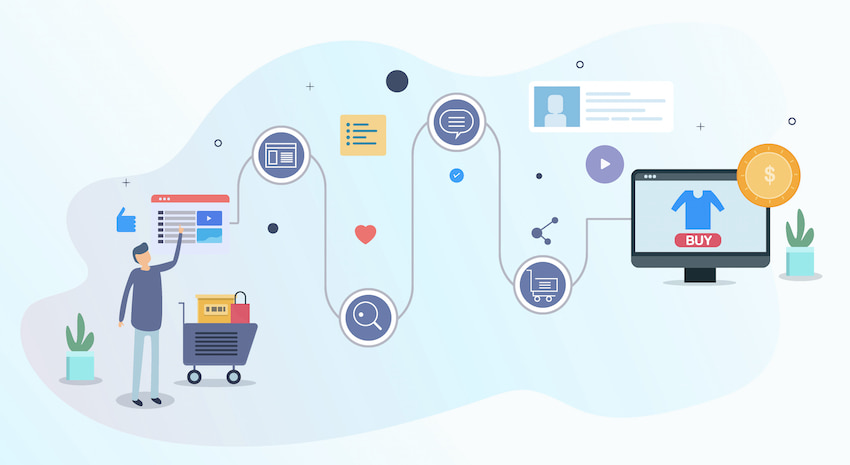Email marketing is the use of email to encourage and develop new, enhanced relationships with clients, as well as to promote products or services. It’s one of the basic cornerstones of digital marketing.
Since the nineties, some companies have been sending massive emails to reach a larger audience. Today, however, the practice of email marketing is much more sophisticated; there are some special, high-powered programs used to schedule, segment and customize messages.
Why is it important?
Email marketing holds the highest ROI of all inbound strategies, with the potential to generate income of up to US$40 per each invested US$1.
This makes it the easiest and most efficient way of doing lead nurturing, that is to say, to follow up all our leads sending them relevant and useful information to help them move from one sales stage to the next. This is essential to grant their stay in our sales funnel and not ending up in our competitor’s sales funnel.
Additionally, Email marketing is a tool that contributes to increasing the presence of a brand facing its potential clients, and also keeping them loyal. A loyal client builds a tight bond which turns us into their first option and part of the client’s lifestyle, by means of the post-sales added value.
Differences between Email marketing and SPAM
At first sight, both Email marketing and SPAM are based on sending out a lot of emails to potential clients. However, there are some key differences which place the former within the universe of Inbound Marketing, and the latter within the universe of outbound marketing.
| Email Marketing | SPAM |
| Messages are sent only to users who have given consent to be contacted. | Messages are sent to massive databases, with no sort of consent of addressees. |
| Messages are customized according to the client’s personal data and purchase stage. | There’s no sectioning of emails, the only objective is reaching as many users as possible, regardless of their needs. |
| Content sent is relevant and useful for the user. | Message content just aims at selling. |
| Quality is prioritized over quantity. | Quantity is prioritized over quality. |
How to do Email marketing?
Below you’ll find the general process to be followed in email marketing (inbound):
- Generating Leads: A leads database is created from different feeds such as lead magnets, forms, actual stores, records, etc. Information about leads is concentrated into some specialized software, which may be a CRM or an email administrator.
- Segmenting Leads: The leads database is segmented according the type of buyer persona, purchase stage and inlet channel to the funnel.
- Sending Emails: The delivery of customized content is scheduled for each lead. This content may cover educational purposes for a product or service, promotion, conversion or loyalty building. A/B tests are usually carried out as well.
- Measuring results: Results are measured and analyzed in order to keep optimizing the strategy.
How to measure the effectiveness of an Email marketing campaign?
The main indicators or KPI’s of Email marketing are:
- Deliverability: It refers to the rate of valid delivered emails –those which weren’t bounced by the email server.
- Reading rate: It refers to the amount of users who actually opened the email, instead of simply ignoring or sending it to the recycle bin.
- Clicks rate: This indicator tells us how many people out of those who opened our email actually clicked on some link included there.
- Conversions: Finally, this metrics tells us how many people out of those who have opened our email or clicked on a link have actually achieved the original objective of the email.
Case study:
Let’s imagine that you want to promote your winter clothes collection on one of your blog entries. Below the post, you include a lead magnet to receive a discount coupon.
Let’s say you’ve received 100 leads as from that content. Now, you send an email with the discount coupon to those 100 people and you get the following results:
Out of 100 emails sent, the server “bounced” six, so your delivery rate was 94 emails received / 100 emails sent X 100 = Delivery rate 94%
Out of 94 emails delivered, 42 people opened them. Your opening rate was 42 opened emails / 94 emails delivered X 100 = Opening rate 50%
Out of 42 people who opened the email, just 30 clicked on the link to your e-commerce to use the discount coupon. Then, your click rate was 30 users who clicked / 42 opened emails X 100 = Click rate 71%
Out of 30 people who clicked the link, just 12 made a purchase. Your relative conversion rates are:
- 12 conversions / 94 emails delivered X 100 = General conversion rate 13%
- 12 conversions / 42 emails opened X 100 = Conversion rate of opened emails 28.5%
- 12 conversions / 30 clicks on the link X 100 = Conversion rate of clicks 40%
Who is in charge of Email marketing?
Email marketing is a tool that aligns with general inbound strategies. To do it properly it’s necessary to make use of several features from digital marketing. In particular, we can mention these:
- A marketing pro who can manage, set up and integrate the email marketing software to your sales process.
- A digital marketing specialist who decides on the type of contents to be sent.
- An article writer who writes the text of contents.
- A graphic designer who shapes the contents.
Keep learning
If you want to know the best practices to optimize Email marketing with your leads, check the following links we’ve picked for you:
- Beginners’ Guide of Email marketing – By Neil Patel
- What Is Email Marketing? – By The Balance SB
- Top 10 Email Marketing Metrics for Ecommerce – By Practical Ecommerce
- 13 Tips for Effective Email Marketing – By Pronto Marketing
- The complete Email marketing guide for beginners – By Campaign Monitor
- How to run a successful email marketing campaign? – By OptinMonster
What is Workana?
We invite you to know Workana, the leading freelance marketplace. We’ve been working since 2012 to keep connecting companies and entrepreneurs with remote workers of the most diverse specialty areas.




